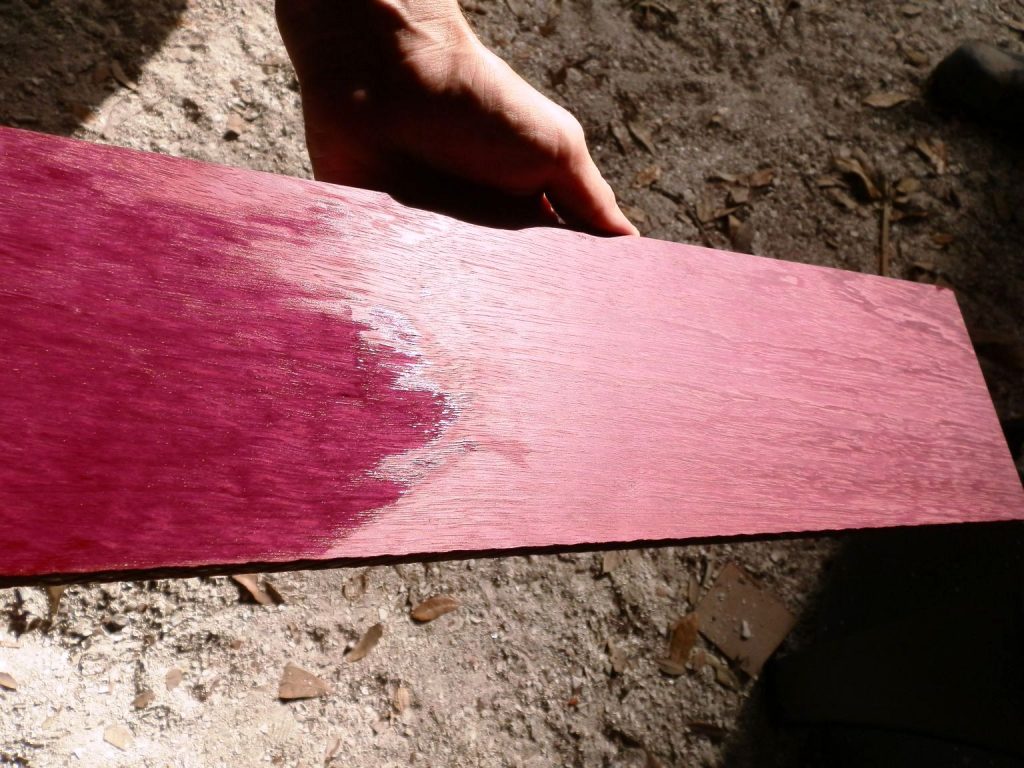Purpleheart is a rather unique hardwood, mostly due to its color. While the color everyone associates with purpleheart is purple, true to its name, the wood can vary somewhat, it can also be greyish/brown. Generally speaking, the purple color really doesn’t appear when freshly cut, but upon exposure the wood turns more purplish. The use of ultraviolet light can increase the shift to purple, resulting in a wood that is about the color of eggplant.
As a hardwood, purpleheart is very durable, resisting both rot and insects extremely well. The only reported enemy of purpleheart is marine borers, which can be problematic when purpleheart is used for marine applications. Coming from the peltogyne genus of 23 species of trees, the wood grows from Mexico to Brazil.
While the durability of purpleheart is enough in and of itself to make this a popular wood, it is its appearance that most people focus on. While most wood species fall in the browns somehow, whether that be a very light beige, such as aspen or maple or a very dark brown like Wenge or ebony. There are a few woods with a reddish tinge to them and olivewood can be greenish. But there is no other wood species in use that is purple.
The purple color that purpleheart provides makes it a favorite wood for inlays and other decorative uses. Nevertheless, it is also regularly used for boat building, musical instruments, furniture and even hardwood flooring. The coloration makes it a popular wood for specialty projects, such as turning pens and stoppers. Purpleheart is readily available in a variety of different shapes and thicknesses, from a variety of online suppliers, ranging from 1/16” up to ¾” thick, as well as in the form of veneer. There are enough suppliers providing purpleheart that it is worthwhile shopping around for the best price. However, I have been unable to find it sold in America in the form of plywood of any thickness.

Working with purpleheart can be challenging. Although the wood is mostly straight-grained, it can have spots where the grain interlocks and is hard to read. Tearout is a common problem, as the wood can be cross-grained when least expected. This makes it difficult to hand plane, chisel or carve. Extremely sharp tools are needed, with more stops to resharpen blades than normal. Care must be taken when turning purpleheart on the lathe, as the grain can easily cause catches or tearout. Nevertheless, the wood is not overly hard on tools and doesn’t cause them to dull rapidly, like some harder, denser woods will.
While one might expect purpleheart to be expensive, due to its unusual appearance, it is actually not all that rare and the trees are not endangered. Pricing for purpleheart dimensional lumber is roughly equivalent to most domestic hardwoods. Turning blocks are roughly the same price as walnut or other common hardwoods.
Due to its unique color, purpleheart works extremely well when combined with other woods, especially those where there is a large difference in the wood’s colors. One such combination is purpleheart, bubinga and mahogany, although a very similar look can be made by combining purpleheart with maple and walnut, for a considerably lower cost.




